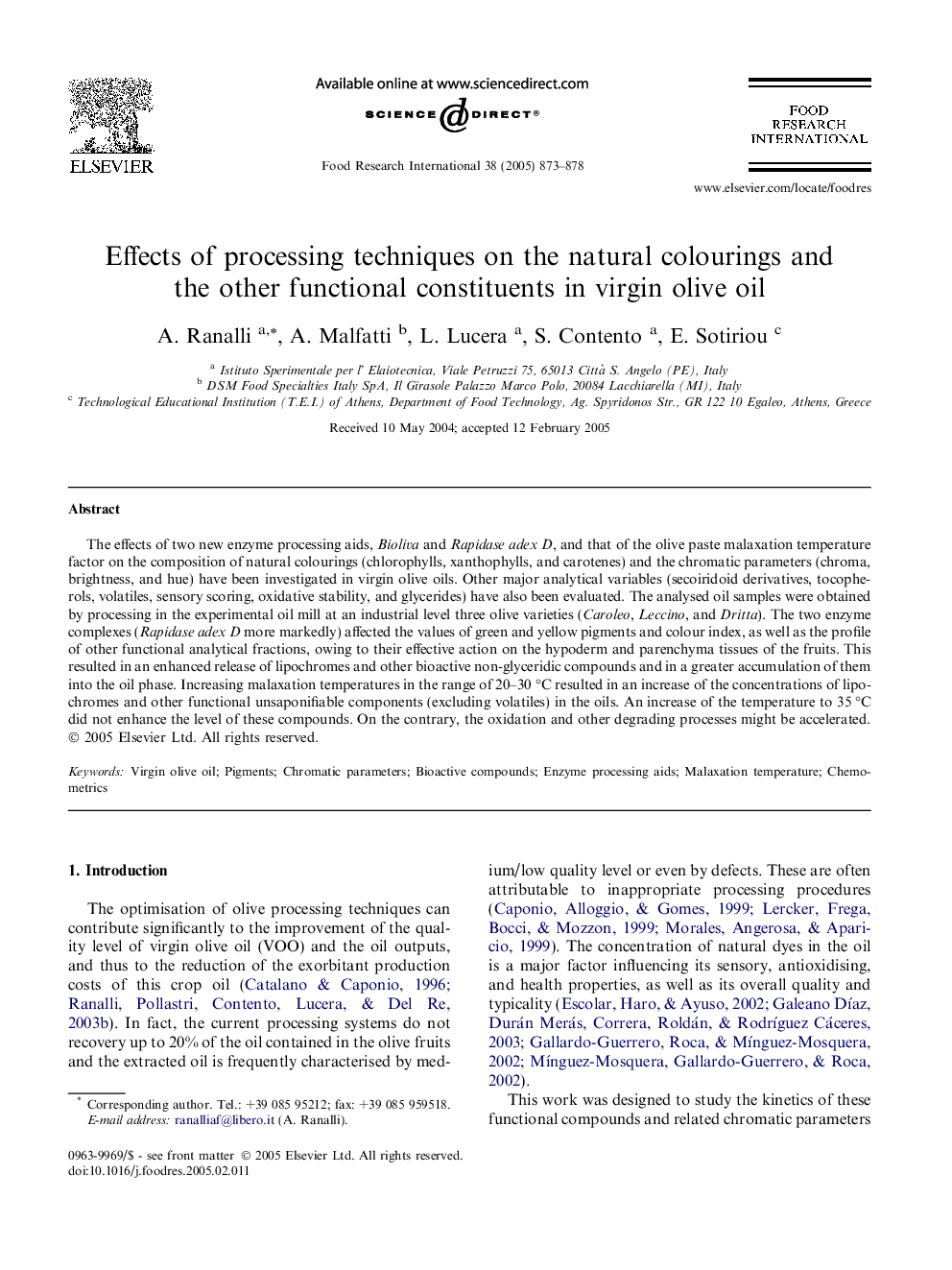| Article ID | Journal | Published Year | Pages | File Type |
|---|---|---|---|---|
| 9487394 | Food Research International | 2005 | 6 Pages |
Abstract
The effects of two new enzyme processing aids, Bioliva and Rapidase adex D, and that of the olive paste malaxation temperature factor on the composition of natural colourings (chlorophylls, xanthophylls, and carotenes) and the chromatic parameters (chroma, brightness, and hue) have been investigated in virgin olive oils. Other major analytical variables (secoiridoid derivatives, tocopherols, volatiles, sensory scoring, oxidative stability, and glycerides) have also been evaluated. The analysed oil samples were obtained by processing in the experimental oil mill at an industrial level three olive varieties (Caroleo, Leccino, and Dritta). The two enzyme complexes (Rapidase adex D more markedly) affected the values of green and yellow pigments and colour index, as well as the profile of other functional analytical fractions, owing to their effective action on the hypoderm and parenchyma tissues of the fruits. This resulted in an enhanced release of lipochromes and other bioactive non-glyceridic compounds and in a greater accumulation of them into the oil phase. Increasing malaxation temperatures in the range of 20-30 °C resulted in an increase of the concentrations of lipochromes and other functional unsaponifiable components (excluding volatiles) in the oils. An increase of the temperature to 35 °C did not enhance the level of these compounds. On the contrary, the oxidation and other degrading processes might be accelerated.
Keywords
Related Topics
Life Sciences
Agricultural and Biological Sciences
Food Science
Authors
A. Ranalli, A. Malfatti, L. Lucera, S. Contento, E. Sotiriou,
